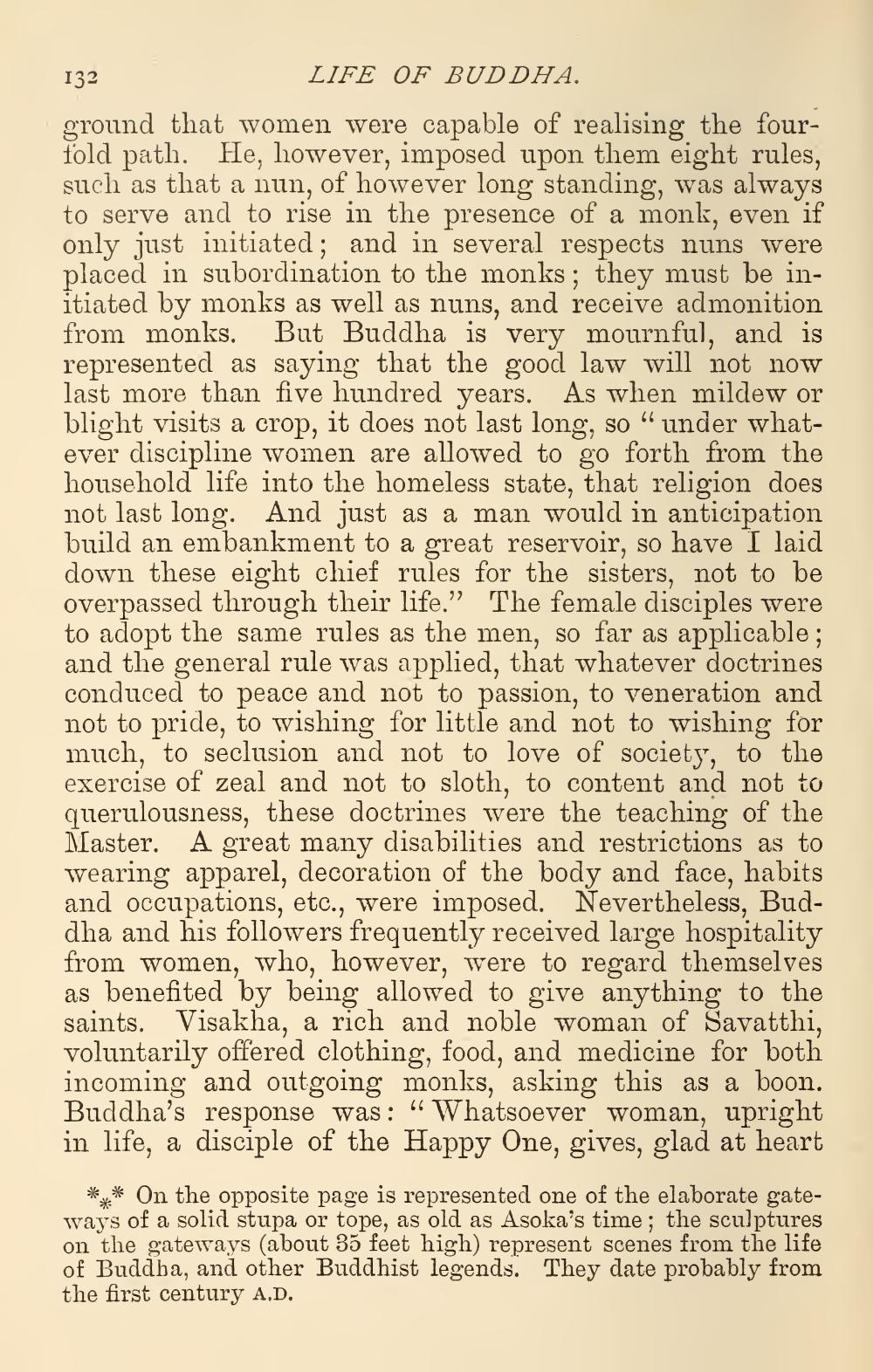________________
132
LIFE OF BUDDHA. ground that women were capable of realising the fourfold path. He, however, imposed upon them eight rules, such as that a nun, of however long standing, was always to serve and to rise in the presence of a monk, even if only just initiated; and in several respects nuns were placed in subordination to the monks; they must be initiated by monks as well as nuns, and receive admonition from monks. But Buddha is very mournful, and is represented as saying that the good law will not now last more than five hundred years. As when mildew or blight visits a crop, it does not last long, so “under whatever discipline women are allowed to go forth from the household life into the homeless state, that religion does not last long. And just as a man would in anticipation build an embankment to a great reservoir, so have I laid down these eight chief rules for the sisters, not to be overpassed through their life.” The female disciples were to adopt the same rules as the men, so far as applicable; and the general rule was applied, that whatever doctrines conduced to peace and not to passion, to veneration and not to pride, to wishing for little and not to wishing for much, to seclusion and not to love of society, to the exercise of zeal and not to sloth, to content and not to querulousness, these doctrines were the teaching of the Master. A great many disabilities and restrictions as to wearing apparel, decoration of the body and face, habits and occupations, etc., were imposed. Nevertheless, Buddha and his followers frequently received large hospitality from women, who, however, were to regard themselves as benefited by being allowed to give anything to the saints. Visakha, a rich and noble woman of Savatthi, voluntarily offered clothing, food, and medicine for both incoming and outgoing monks, asking this as a boon. Buddha's response was: “Whatsoever woman, upright in life, a disciple of the Happy One, gives, glad at heart
*** On the opposite page is represented one of the elaborate gateways of a solid stupa or tope, as old as Asoka's time; the sculptures on the gateways (about 35 feet high) represent scenes from the life of Buddha, and other Buddhist legends. They date probably from the first century A.D.




